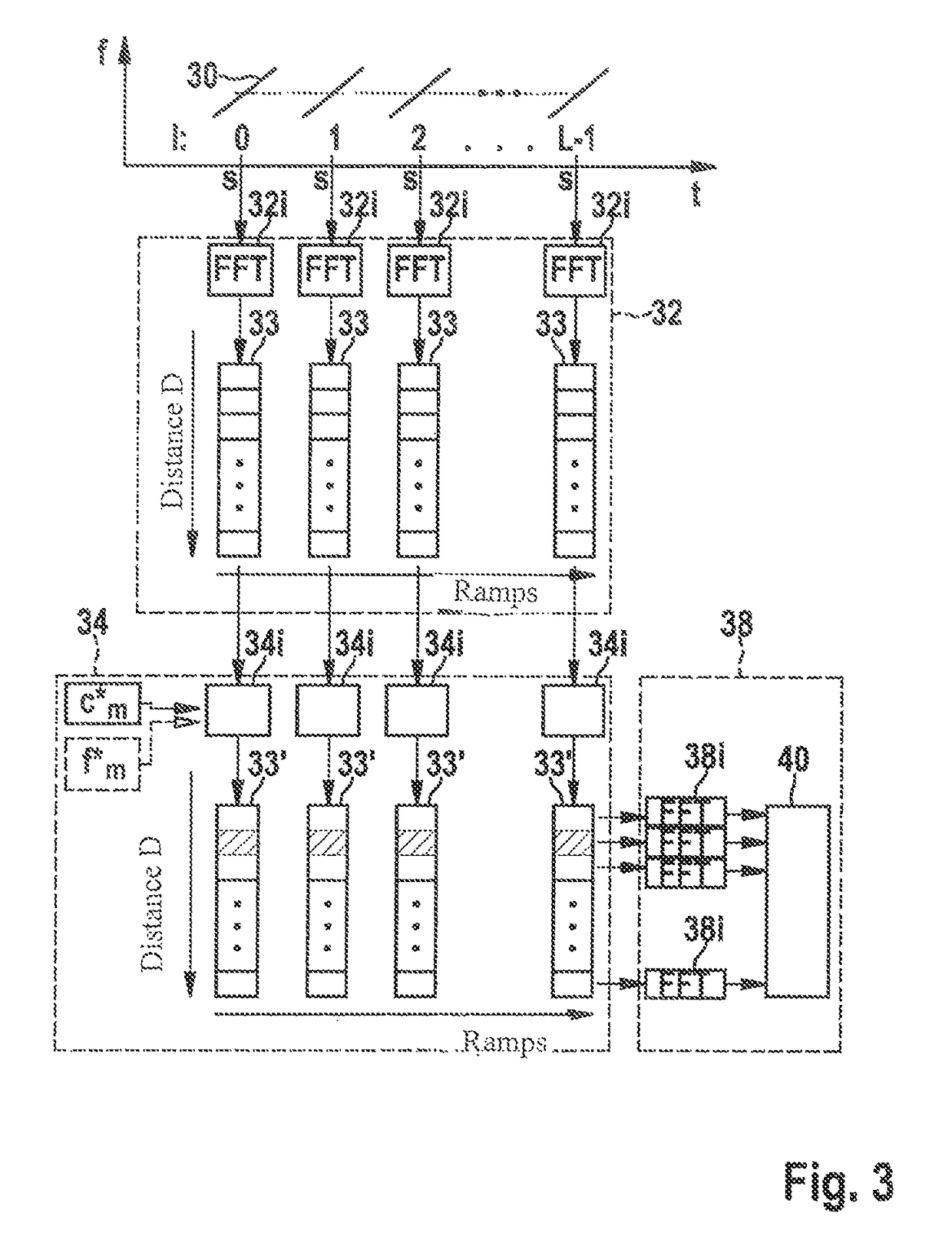Interference cancellation in an FMCW radar
a technology of interference cancellation and radar, applied in the direction of reradiation, measurement devices, instruments, etc., can solve the problems of insufficient distance separation capability, undesired reception of radar signals from other vehicles in specific traffic scenarios, and increased probability that radar sensors will also receive undesired interference signals, etc., to achieve the effect of increasing the number of radar sensors
- Summary
- Abstract
- Description
- Claims
- Application Information
AI Technical Summary
Benefits of technology
Problems solved by technology
Method used
Image
Examples
Embodiment Construction
[0036]FMCW radar sensor 10 shown in FIG. 1 is installed in the front of a motor vehicle. It encompasses an oscillator 12 for generating a transmitted signal, a frequency modulation device 14 for controlling the frequency of oscillator 12, and a control and evaluation unit 16 that is connectable to a vehicle bus system 17. An output of oscillator 12 is connected via a controllable phase modulator 18 to a transmitting antenna element 20. An output of oscillator 12 is furthermore connected to a mixer 22. The latter is configured to mix a received signal received by a receiving antenna element 24 with the frequency-modulated signal of oscillator 12 in order to generate a baseband signal s. The baseband signal is sampled and digitized by an analog-digital converter 26. Mixing and digitization are performed while retaining the phase relationships between the received signal and the transmitted signal. Control and evaluation unit 16 controls frequency modulation device 14, and encompasses ...
PUM
 Login to View More
Login to View More Abstract
Description
Claims
Application Information
 Login to View More
Login to View More - R&D
- Intellectual Property
- Life Sciences
- Materials
- Tech Scout
- Unparalleled Data Quality
- Higher Quality Content
- 60% Fewer Hallucinations
Browse by: Latest US Patents, China's latest patents, Technical Efficacy Thesaurus, Application Domain, Technology Topic, Popular Technical Reports.
© 2025 PatSnap. All rights reserved.Legal|Privacy policy|Modern Slavery Act Transparency Statement|Sitemap|About US| Contact US: help@patsnap.com



